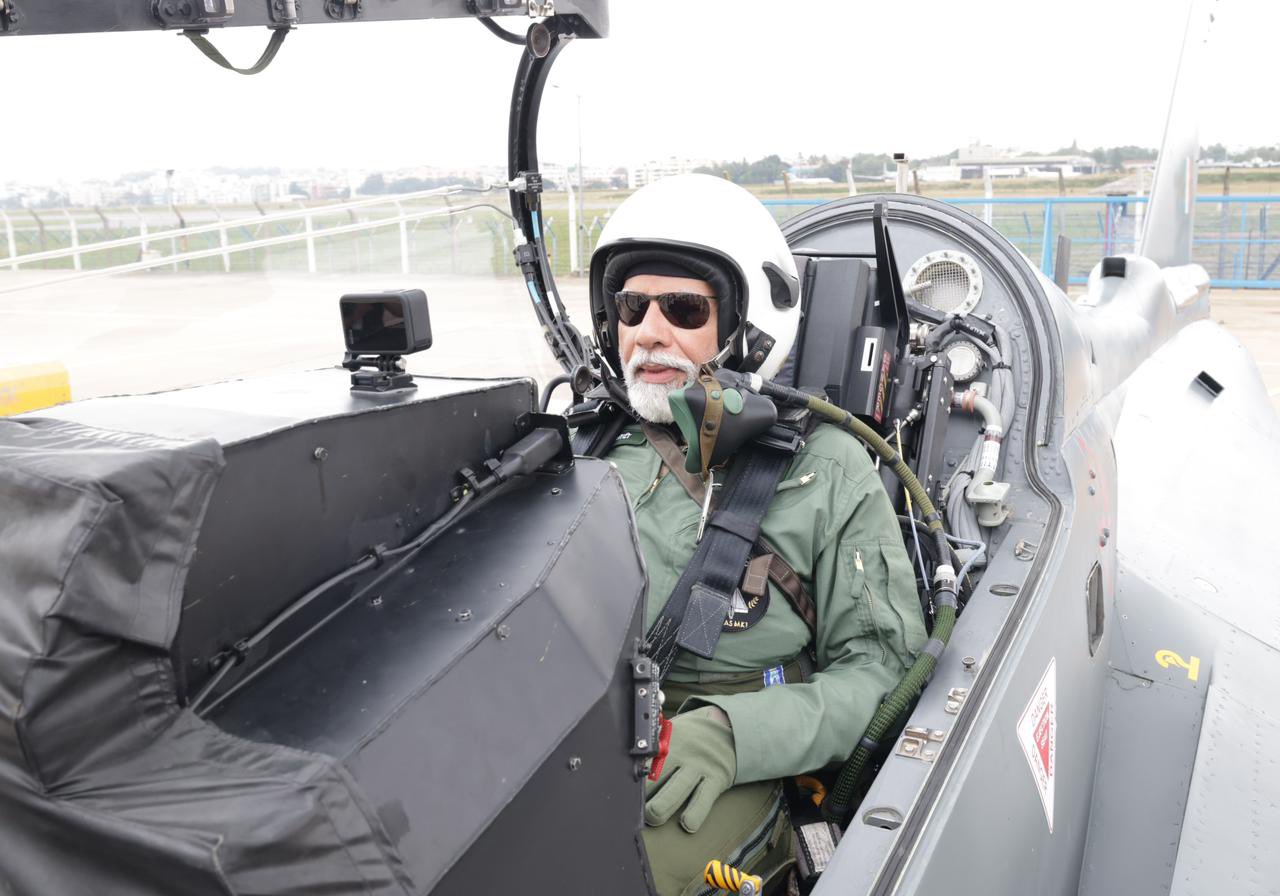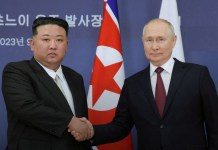The Number 3 Squadron of the Indian Air Force (IAF), which has given four chiefs to the IAF and two chiefs to the Pakistan Air Force (PAF), will soon have another first under its belt.
The squadron, with the honor of rendering the longest uninterrupted service since its formation in Peshawar in 1941, will become the first Indian squadron to operate the advanced variant of the indigenous Light Combat Aircraft MK1A.
The Number 3 Squadron is one of the two units of MiG-21 Bison currently being operated by the IAF. Located in the forward air base of Nal in Rajasthan, the base’s entrance is a testimony to the rich history of the unit.
Two mighty MiG-21s stand tall at the entering gates. When the author visited the base recently, the Mig 21 Bison, the most advanced of the MiG-21s in the world, were continuing with their routine flying. The Squadron personnel, however, braced themselves for another change of an era.
The squadron named ‘Cobras’ will be bidding adieu to its fighter jets by 2025. The deliveries of LCA MK1A are expected to begin by February 2024. The IAF has placed orders for 83 LCA Mk1A aircraft in 2021, and the government has cleared decks for an additional order of 97 LCA MK1A.
The deliveries are likely to be spread over the next four years as per the schedule. The IAF is banking to a large extent on the LCA Tejas to make up for the deficiency in fighter squadrons.
Reports indicate that Number 3 will be the first of the 10 Squadrons of LCA MK1A that the IAF will be inducted in its inventory to make up for the phased-out MiG-21s, MiG-23, and Mig 27 fighter jets.
The force has planned to retire its MiG-29s, followed by Mirages and Jaguars in due course of time. The indigenous LCA Tejas will form the bulk of the IAF’s muscle in the coming decade.
About half of the Mk1A Tejas fighter jets will carry the Israeli AESA radar, which is more advanced than the pulse Doppler radar mounted on the trainer jets. The remaining LCA MK1A, starting from around 2026, will carry the indigenously developed top-of-the-line Gallium Nitride Uttam AESA radar, which is exponentially more powerful than Gallium Arsenide radar. The Gallium Nitride Uttam AESA radar will allow a Tejas jet to land a mightier punch much earlier and from much farther away.
These fighter jets are to be armed with the indigenous air-to-air Astra missile. The Astra air-to-air missile is among the most sophisticated missiles in the world. The Astra Mk 2 was successfully test-fired from a Tejas fighter jet in 2022. The Astra Mk 3 is under development.
Destroy the Target With Precision
The Squadron, with its motto “Lakshya Vedh” (Destroy the Target with Precision), was raised in Peshawar in 1941. The Squadron numbers 1 and 2 have been number plated.
Number-plating is an official process that involves keeping a unit alive on paper while posting all its men out to other units. The unit is resurrected at a later date with new aircraft and possibly a new location.
Before independence, the Number 3 Squadron was tasked to rein in the insurgency in the North West Frontier Province. Right after the independence of India in 1947, the Cobras played a pivotal role in Hyderabad operations.
Hyderabad was one of the three Muslim-ruled princely states with a majority of Hindu population, which has decided to go with Pakistan. The Cobras flew in a Close Air Support role with the Indian Army to stop Pakistan from taking control of Hyderabad. Hyderabad was annexed by India after the military operation.
The Cobras have operated an array of aircraft, including Audax, Hurricane, Spitfire, Tempest, Vampire, Ouragan, and Mystere. The unit located at Pathankot took on Pakistan’s armor in the 1965 war, and 1971, it was at Hindon Airbase in a close support role.
The unit adopted MiG-21s in 1972. Six pilots who served in the squadron went on to become Air Force chiefs — four in India and two in Pakistan.
The Chiefs given to the IAF are Air Chief Marshal OP Mehra, Air Chief Marshal IH Latif, Air Chief Marshal Dilbagh Singh, and Air Chief Marshal SK Kaul. Two Squadron officers became PAF chiefs: Air Chief Marshal Asghar Khan and Air Chief Marshal Nur Khan.
The unit was the first to upgrade its MiG-21 F/L to MiG-21 ‘Bisons’. The Bisons had a MiG-29 bubble canopy and wrap-around windscreen, far more capable radar, a helmet-mounted weapon’s sight, and beyond-visual-range, fire-and-forget missile capability. These and other modifications increased the airplane’s operational capability four-fold.
Apart from that, the unit was the first to welcome female fighter pilots in the IAF, an epochal moment in the history of the service. The unit presently has three women fighter pilots.
The MiG-21 Days
By April 4, 1972, the unit was flying the MiG-21s. The unit saw the first MiG ejection during a four-aircraft low-level sortie in December 1972.
The diary entry of the incident involving the country’s first supersonic fighter jets was recorded in an inimitable style.
“On one of the turns about at the fag end of the sortie, Oz (nick-name of the pilot) hit a bird, or it may be vice versa, and flamed out (the aircraft and not the bird). He was very cool about the whole show and ejected at 1.2 km quite safely after having tried a re-light, which just did not take place,” the scribe wrote in the squadron diary.
Located in the Delhi area, the unit then entered a war against Birds. Following another bird hit leading to ejection in 1973, it was decided to relocate the squadron to Pathankot.

The Maverick MiGs
When the last of the MiG-21 Bisons landed back in 2025, the supersonic jet interceptor aircraft would have rendered 60 years of service. It made aviation records and became the most-produced supersonic jet aircraft in aviation history (11,496), the most-produced combat aircraft after the Korean War, and has had the longest production run of a combat aircraft (1959-2013, including F-7 variants), compared with McDonnell Douglas F-15 (1972–present), and the Lockheed Martin F-16 (1973-present).
The Mikoyan-Gurevich MiG-21 (NATO reporting name: Fishbed) was designed as a supersonic jet interceptor aircraft by the Mikoyan-Gurevich Design Bureau (OKB) of the Soviet Union, which wanted to saturate the sky with simple, lightweight, and reliable jets.
Its nickname included “Balalaika” because its plan-form resembles the stringed musical instrument of the same name. In Poland, they called it “Ołówek,” Polish for pencil, due to the shape of its fuselage. Vietnamese called it “Én Bạc,” meaning “Silver Swallow.”
For a long time, MiG-21s were the highest number of platforms in the IAF’s fleet. India relied heavily on the MIG-21 to maintain air superiority against its arch-rival Pakistan.
The aircraft’s success has been recognized globally and earned it the moniker of AK-47 of airplanes. According to the authors David Nicolle and Tom Cooper in “Arab MIG 19 and MIG 21 Units in Combat,” India even provided MIG pilot training to countries like Iraq. Nicolle and Cooper say, contrary to popular belief, Iraqi pilots in the 1970s were trained more on the MIG-21s by India than by Pakistan or the Soviet Union.
As the EurAsian Times report indicated, it has been unfairly dubbed a “flying coffin” or “widow maker.” An open-source data comparison indicates that during peacetime, the average number of MiG-21 losses, despite sheer numbers and years of operation, is lower than most fleets.
It must also be noted that the MiG-21 sorties were much shorter in duration. The MiG-21 has not been as unsafe as often projected to be.
- Ritu Sharma has been a journalist for over a decade, writing on defense, foreign affairs, and nuclear technology.
- She can be reached at ritu.sharma (at) mail.com
- Follow EurAsian Times on Google News




